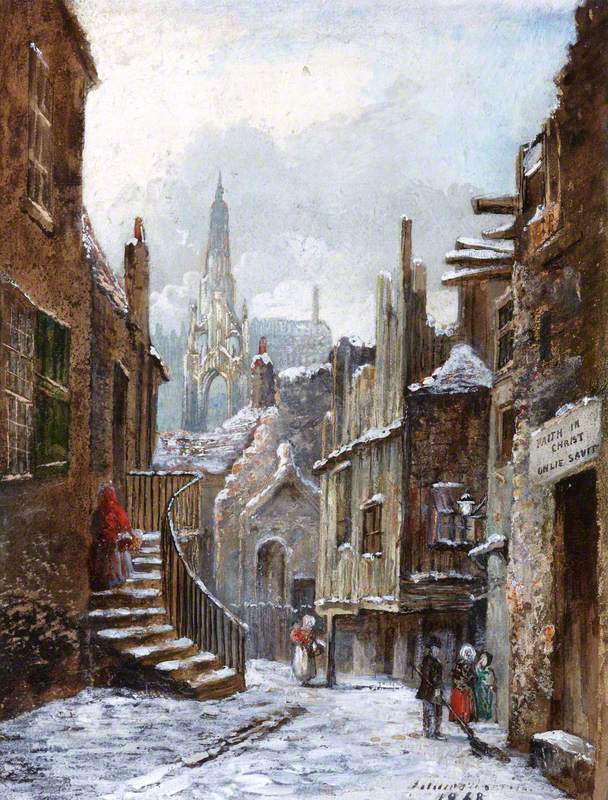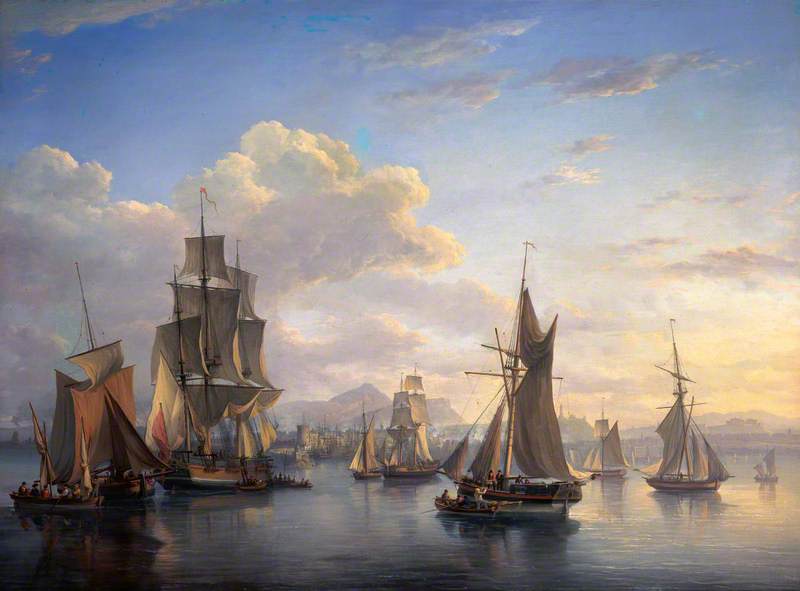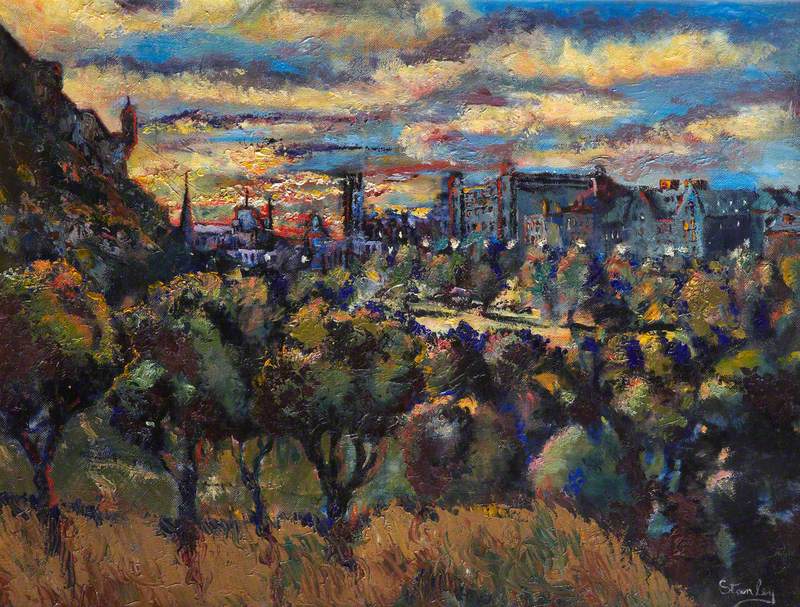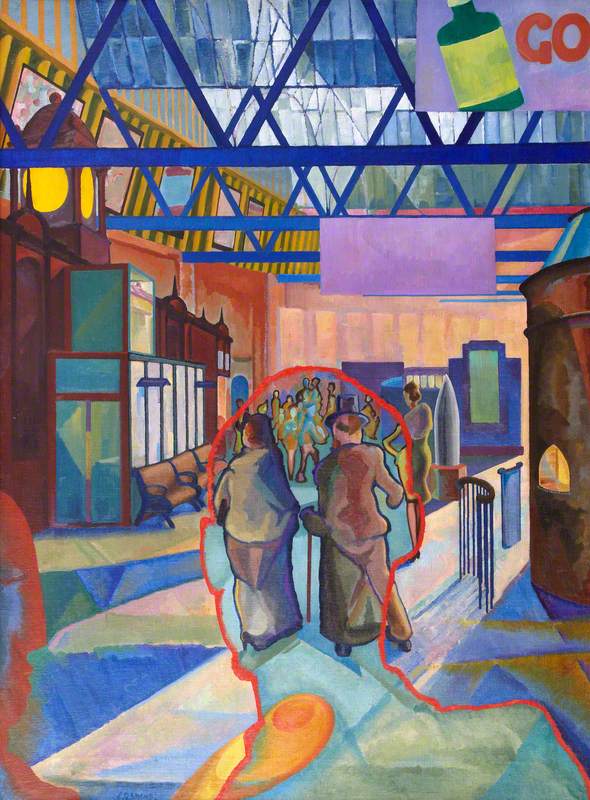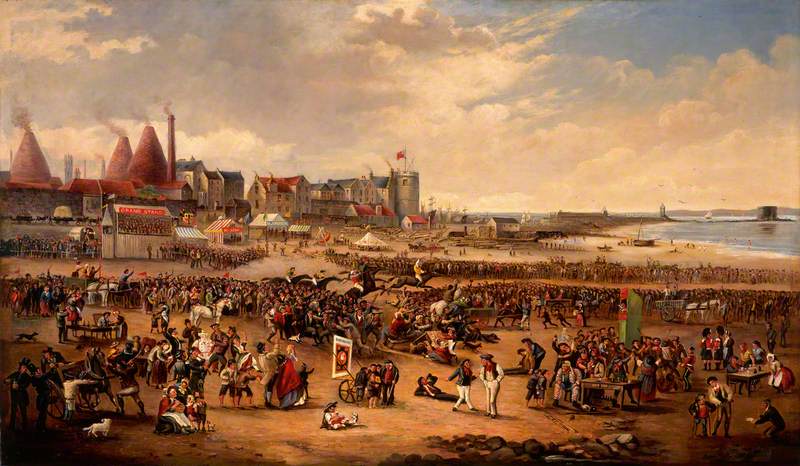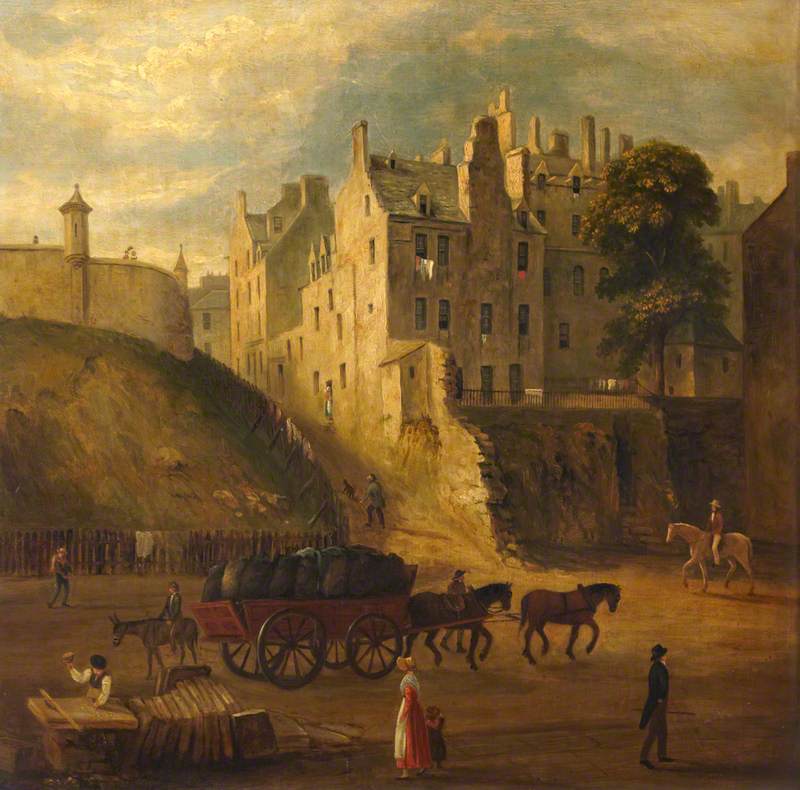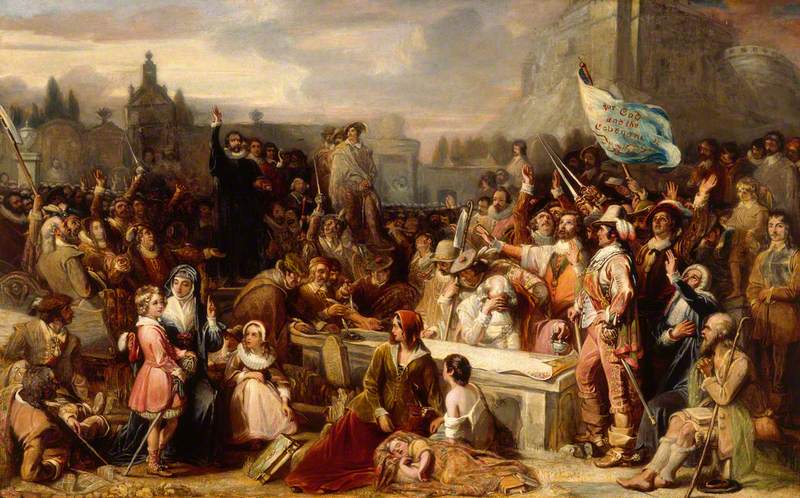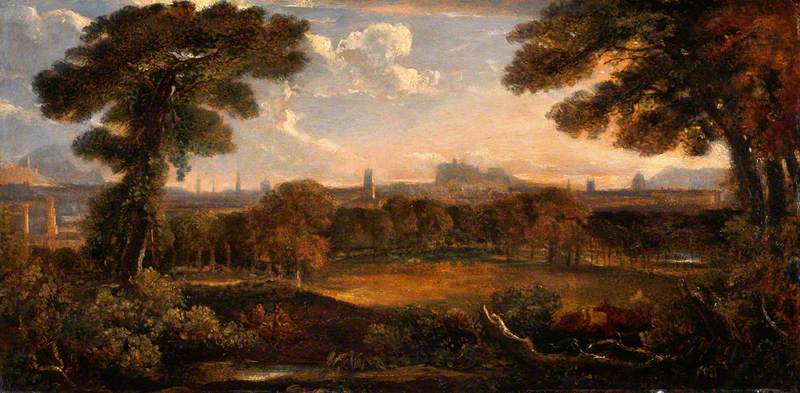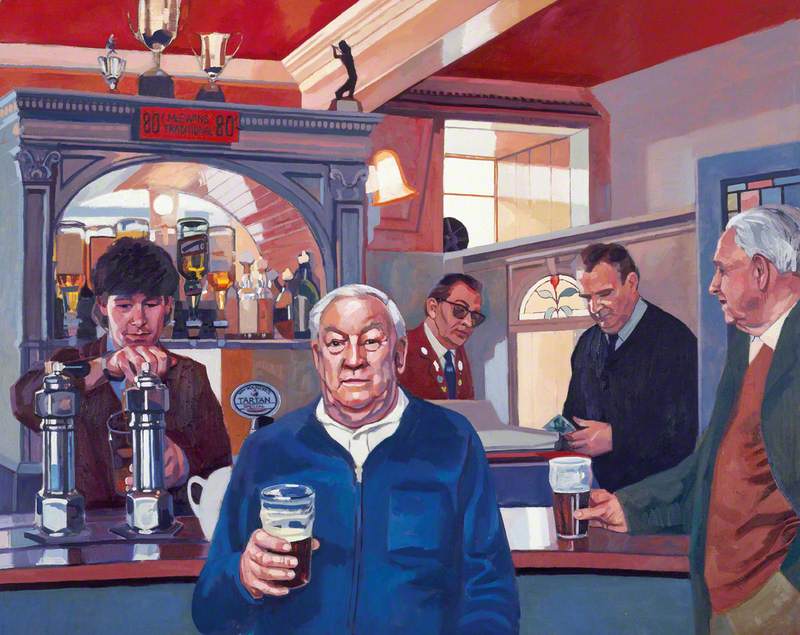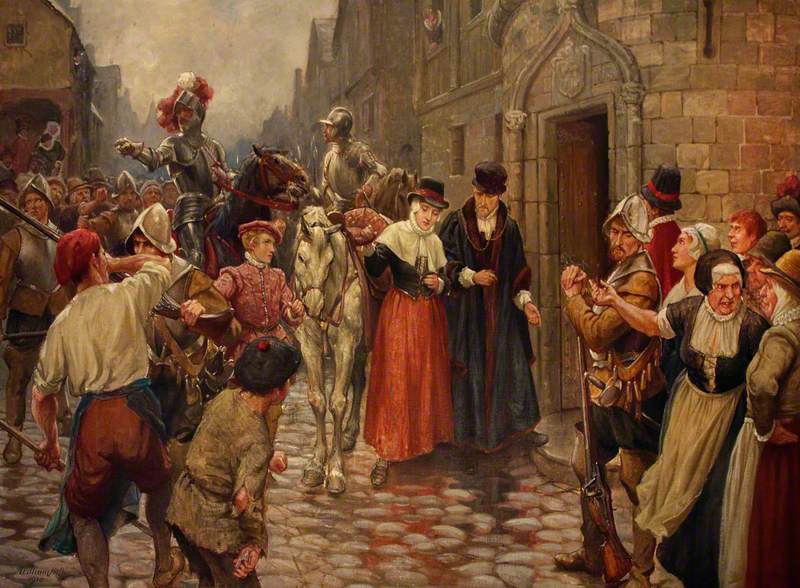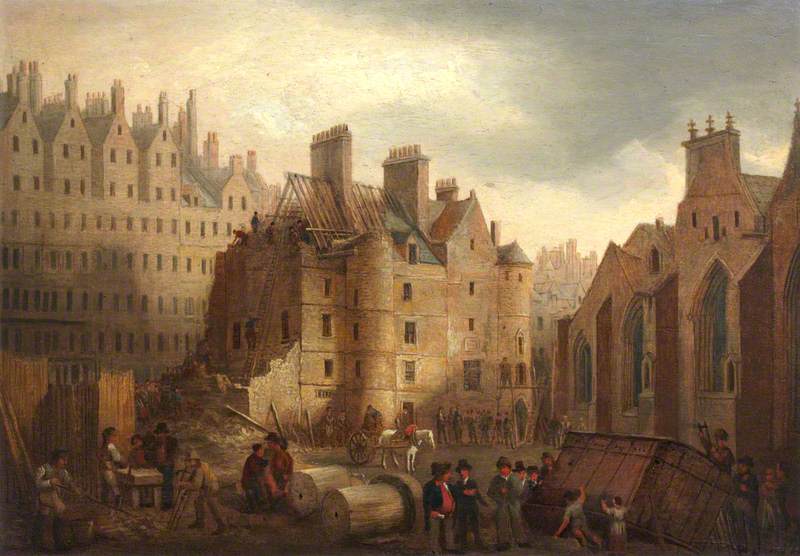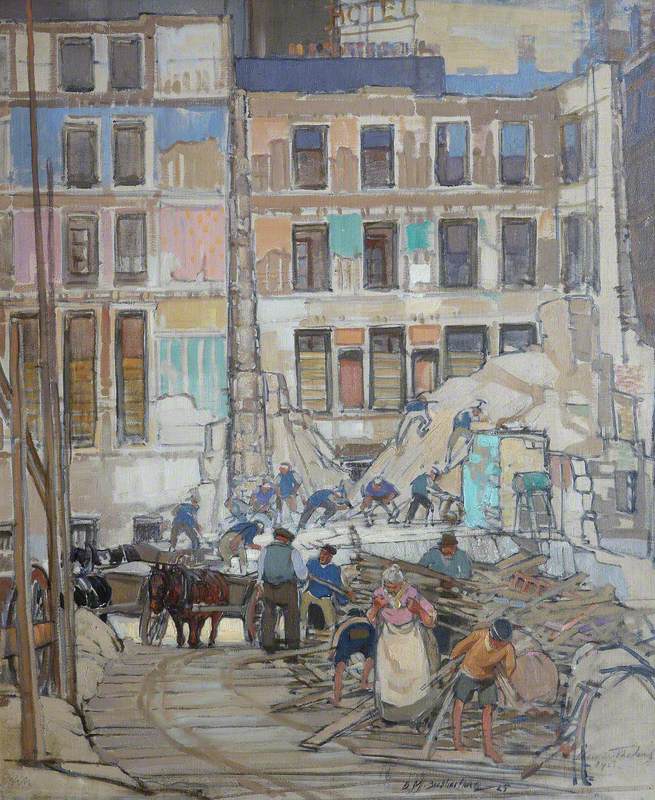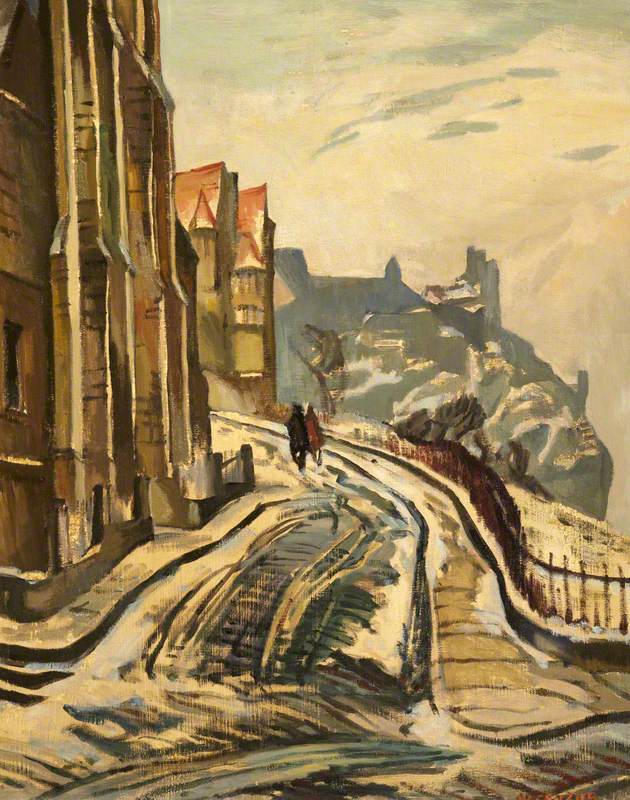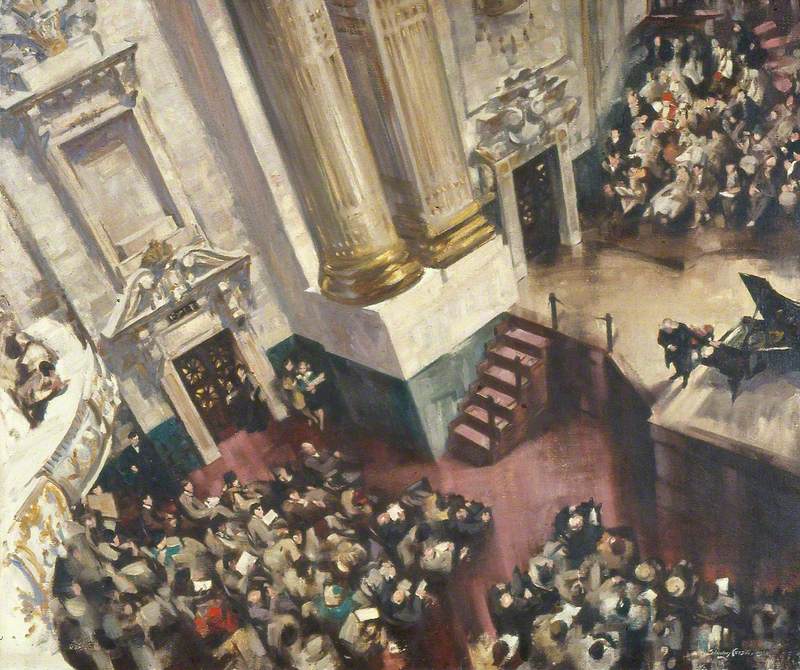"This is a city of shifting light, of changing skies, of sudden vistas. A city so beautiful it breaks the heart again and again.” Alexander McCall Smith
Edinburgh is a city steeped in history and has featured in many paintings over the centuries. We are very lucky in Museums & Galleries Edinburgh to have a rich supply of paintings depicting the growth of the City and documenting landmark moments in history.
In this exhibition curated by our Learning & Public Programmes Manager, Margaret Findlay, our front of house team have chosen their personal favourites. We are also delighted to have a guest choice. David McLean is Heritage & Retro Reporter for Scotland on Sunday. We present to you Edinburgh.
-
Maule's Corner after Rain, Edinburgh
Maule's Corner after Rain, Edinburgh 1925David McLean, Lost Edinburgh & Scotland on Sunday
With the announcement that Jenners is closing, this classic painting is more poignant than ever.
This impressionistic vision, showing the famous Maule's Corner following a downpour, captures beautifully the contrast of bleak skies and the reflection of bright city lights. Billed "one of the largest and best-appointed" shopping emporiums in Scotland, Robert Maule & Son opened at the West End in 1894. Stuart's vantage point is from within the iron entrance gates to Princes St Station and gives us a tantalising glimpse of a busy Edinburgh city centre in the inter-war period, with the many windows and departments of the famous Maule's store glowing invitingly in the background.
Robert Easton Stuart (1864–1940)
Oil on canvas
H 71.1 x W 92 cm
Museums & Galleries Edinburgh – City of Edinburgh Council
-
The Entry of George IV into Edinburgh from the Calton Hill, by John Wilson Ewbank
The Entry of George IV into Edinburgh from the Calton Hill, 1822 1827Margaret Findlay, Learning and Programmes Manager
As an educator this type of painting is perfect for my work, and here we have stories to tell. In 1822, the year following his coronation, George IV paid a state visit to Edinburgh the first visit by an English monarch since Charles II. Every effort was made by both the Royal household and Sir Walter Scott, who supervised the King's reception, to ensure that the trip was a success. George spent over £1000 on clothes and highland dress, the streets were lined. This magnificent panorama of the capital from Calton Hill presents us with the striking contrasts between Edinburgh’s Old Town, its grey, cramped tenements dominated by the ancient castle, and the beginning of the elegant New Town.
John Wilson Ewbank (c.1799–1847)
Oil on canvas
H 150.5 x W 240 cm
Museums & Galleries Edinburgh – City of Edinburgh Council
-
The Execution of Deacon Brodie and George Smith, Alexander Hay Ritchie (1822–1895)
The Execution of Deacon Brodie and George SmithRoz Third, Visitor & Monument Assistant
There is no question that Edinburgh’s history is full of interesting people. Deacon Brodie was just one of them. Cabinet-maker and pillar of the community by day, burglar looking to fund his gambling habit by night, he was the inspiration for Robert Louis Stevenson’s The Strange Case of Dr. Jekyll and Mr. Hyde. After a highly publicized trial, he became somewhat of a celebrity. This painting shows how the crowds would have gathered for his execution along with accomplice George Smith. A dark subject matter but undeniably an interesting portrayal of this moment in the city’s history.
Alexander Hay Ritchie (1822–1895)
Oil on panel
H 25.7 x W 33.7 cm
Museums & Galleries Edinburgh – City of Edinburgh Council
-
Dunbar Close, Edinburgh, Jane Stewart Smith (1839–1925)
Dunbar's Close, Lawnmarket, Edinburgh 1868Rachel Weir, Visitor & Monument Assistant
I love this painting because the artist captures a beautiful contrast between the soft wintry tones and the harsh, derelict buildings. At the time of the painting the New Town was under construction and the Old Town had fallen into a state of disrepair. Edinburgh was going through many changes but this painting still gives a gentle glimpse of community in the Old town and I can only imagine the stories the people that lived in those tenement buildings would have to tell. The Royal Mile and its connecting closes are important to me as it’s where I’ve worked for the past five years, so finding a painting that brings The Old Town to life is very special.
Jane Stewart Smith (1839–1925)
Oil on board
H 30.8 x W 23.1 cm
Museums & Galleries Edinburgh – City of Edinburgh Council
-
The Port of Leith, Alexander Nasmyth (1758–1840)
The Port of Leith 1824Paul Meadows, Visitor & Monument Assistant
Look at that sky, with the light reflecting off the still water. Look at the composition. What about the detail on the various ships - even those in the distance, and the clothing of the sailors and port workers going about their business. All this set against a background of the fortified port with the grandeur of Arthur’s Seat, Calton Hill and ancient castle in the distance, it’s like a snapshot in time. This really is a stunning painting! Leith has played a long and prominent role in Scottish history. As the major port serving Edinburgh, it has been the stage on which many significant events in Scottish history have taken place.
Alexander Nasmyth (1758–1840)
Oil on canvas
H 111.8 x W 149.8 cm
Museums & Galleries Edinburgh – City of Edinburgh Council
-
West Princes Street Gardens, Edinburgh, from the East, Stanley Phillips (1911–1994)
West Princes Street Gardens, Edinburgh, from the EastAlice van de Ven, Visitor & Monument Assistant
This painting of Stanley Phillips depicts the Princes Street Gardens with vibrant coloursand an almost hazy texture. If you were to look backwards in this view, you would beoverwhelmed by the high level buildings that make up the Old Town of Edinburgh andthe busy streets that are filled with pedestrians, buses and cars. None of that is noticablein this painting, instead we are presented with the tranquility of nature and acosmopolitan cityscape in the far distance. These two opposites find a way to co-existand what makes Edinburgh an unique place to visit, work and live.
Stanley Phillips (1911–1994)
Oil on board
H 44.5 x W 58.4 cm
Museums & Galleries Edinburgh – City of Edinburgh Council
-
Caley Station, Edinburgh, 1942, Edwin George Lucas (1911–1990)
Caley Station, Edinburgh, 1942Amy Orr, Visitor & Monument Assistant
Originally built in the 1870s, Caley Station was one of Scotland’s largest and most significant railway terminals. For years it was often chosen as the entry point for visiting monarchs, statesmen and celebrities but was ultimately deemed redundant and its demolition began in 1965. Lucas has employed bold lines and vibrant colours to create an extremely striking image. The artist was influenced by surrealism and often incorporated abstraction into his work, which is evident here as this scene is clearly not bound by figurative principles. When looking at this painting, I feel the lively colours represent the bustling epicentre that this station once was; loud, colourful, and teeming with energy.
Edwin George Lucas (1911–1990)
Oil on canvas
H 99 x W 73.7 cm
Museums & Galleries Edinburgh – City of Edinburgh Council
-
Leith Races, William Thomas Reed (1845–1881)
Leith RacesEmma McCombie, Visitor Assistant Supervisor
The Leith Races was a week-long festival that took place in Summer. All sections of society would partake in the festivities and indeed many businesses would close for the week. I love that there is so much to take in when you look at this painting; soldiers, policemen, sailors and what looks like a brawl in the centre of the painting, apparently brawls would last the whole way up Leith Walk! There are the figures playing in the sea, Punch and Judy entertainment and that’s all before I even notice the horses! I love this painting because it transports you back to the mania of the Leith Races. It’s hard to imagine such an event taking place in Leith nowadays – especially with no social distancing!
William Thomas Reed (1845–1881)
Oil on canvas
H 90 x W 154 cm
Museums & Galleries Edinburgh – City of Edinburgh Council
-
Johnston Terrace and Castle Wynd, Edinburgh, unknown artist
Johnston Terrace and Castle Wynd, EdinburghKeith Baxter, Event Duty Manager
Johnston Terrace has always been a place of interest as a boundary between old and new. Its construction was part of a new era of the city and this piece showcases the nature by which Edinburgh has changed and yet somehow remained the same. The view of the terrace is recognisable but has undergone such remarkable structural reform that it serves as an apt metaphor for the city itself. What is perceived today as the ‘old town’ is mostly comprised of Victorian updates to the original streets and many of the old closes were sacrificed in the process, making it technically newer than the original ‘new town’. One unchanging characteristic is the city’s unique personality that is brought to life through this work.
unknown artist
Oil on panel
H 43.5 x W 43.7 cm
Museums & Galleries Edinburgh – City of Edinburgh Council
-
The Signing of the National Covenant in Greyfriars Kirkyard, Edinburgh, William Allan (1782–1850)
The Signing of the National Covenant in Greyfriars Kirkyard, Edinburgh c.1838Alasdair Stuart, Visitor & Monument Assistant
This dramatic painting portrays the signing of the National Covenant in 1638. The Covenant was a signed agreement in opposition to Charles I's proposed reforms to the Church of Scotland. These reforms were to bring the Scottish and English churches closer together, but they were hugely unpopular in Scotland where they saw this as a step towards Catholicism. Although painted 200 years after the event, Allan captures the charged emotions and diversity of the attending crowd as tens of thousands gathered in the city for the event. The signing of the Covenant played a major part in the beginning of the Bishops Wars and Wars of the Three Kingdoms, ending with the execution of the King in London.
William Allan (1782–1850)
Oil on canvas
H 81.5 x W 130.2 cm
Museums & Galleries Edinburgh – City of Edinburgh Council
-
Edinburgh from Inverleith, John Thomson (1778–1840)
Edinburgh from InverleithAlan McMullan, Visitor Assistant
Painted by the landscape artist John Thomson; who counted amongst his acquaintances Robert Burns, Henry Raeburn and who was taught by Alexander Naysmith, this view of Edinburgh and the iconic buildings of the Old Town is beautifully framed between two trees with the estate and pond in the foreground. It is almost exactly the same spot from where I have watched the annual fireworks display which signals the end of the Edinburgh Festival in August. Inverleith Estate was sold to Edinburgh Corporation in 1889 and was officially opened in 1891. Nowadays, Inverleith Park serves the community and visitors to the city with facilities which include tennis, football, allotments, bowling and the natural world.
John Thomson (1778–1840)
Oil on canvas
H 26 x W 47 cm
Museums & Galleries Edinburgh – City of Edinburgh Council
-
The Diggers' Triptych, Maggie Milne (b.1957)
The Diggers' TriptychDaisy White
Here is the central panel from a wider triptych by Scottish artist Maggie Milne which captures an everyday social scene from The Athletic Arms. This heritage pub opened in 1897 and became known locally as ‘The Diggers’ due to its location, neatly sandwiched between two graveyards in the west of Edinburgh and after the hard working gravediggers who drank there. This piece was initially commissioned as part of a 1988 exhibition entitled ’Should Auld Acquaintance Be Forgot’ and seems to take on a new poignancy in current times when we are all missing familiar faces and community settings.
Maggie Milne (b.1957)
Oil on canvas
H 122 x W 152 cm
Museums & Galleries Edinburgh – City of Edinburgh Council
-
Queen Mary Brought Captive to Edinburgh from Carberry Hill, 1567, William Brassey Hole (1846–1917)
Queen Mary Brought Captive to Edinburgh from Carberry Hill, 1567 1910Catriona Mowat, Retail and Reception Manager
In this striking image you can see the detail of the architecture present throughout Edinburgh’s Old Town, although this street no longer exists. I like this image because it shows a queen laid low, taken to an ordinary house on an ordinary street for her captivity. The bystanders depicted are from lower class backgrounds, which makes it one of the few images to humanise Queen Mary by removing the trappings associated with her royal portraits.
Mary herself appears almost serene in this image, despite this being a depiction of her final night in Edinburgh. She was to spend the rest of her life in captivity before being executed at Fotheringhay Castle in 1587.
William Brassey Hole (1846–1917)
Oil on canvas
H 134.6 x W 182.8 cm
Museums & Galleries Edinburgh – City of Edinburgh Council
-
The Old Tolbooth of Edinburgh during Demolition, Alexander Nasmyth (1758–1840)
The Old Tolbooth of Edinburgh during DemolitionLaura McVie, Event Duty Manager
Demolition of over 400 years of history. Besides being a location to receive toll payments and house important meetings, it latterly became the main jail. The West gable end platform (under demolition here) being the location for public executions, with the North face used to prominently display spiked heads as a deterrent to other city dwellers. No other structure was erected on this spot, but brass markings and the Heart of Midlothian setts clearly show the outline and entrance that once was. Although the superstition of spitting into the heart for good luck is presumably less popular at the moment, it’s a reminder of the darker past, where cheerful crowds now annually gather to enjoy the Fringe.
Alexander Nasmyth (1758–1840) (attributed to)
Oil on panel
H 27.9 x W 40 cm
Museums & Galleries Edinburgh – City of Edinburgh Council
-
The Demolition of the Crown Hotel, Edinburgh, David Macbeth Sutherland (1883–1973)
The Demolition of the Crown Hotel, Edinburgh 1925Eva Vaporidi, Visitor Assistant Supervisor
The Crown Hotel stood in Princes St-on the corner of West Register St. Here we’re witnessing its demolition in 1925. This is a scene of transition. A time-lapse of that site would tell us much about the evolution of the city. The first residential property in Princes St. was built here in 1769 and the publisher of Walter Scott later established his business. We see the transition from a residential to a commercial Princes St. In the 19th century, Waverley opened. The hotel was built for railway travellers but made way for Woolworths. Woolworths embodied the consumer revolution of the mid 20th century. Today Apple, emblematic of our era, occupies that site. What does the future hold for this site?
David Macbeth Sutherland (1883–1973)
Oil on canvas
H 81.3 x W 66.3 cm
Museums & Galleries Edinburgh – City of Edinburgh Council
-
View from the Mound, Edinburgh, Looking West, William Crozier (1893–1930)
View from the Mound, Edinburgh, Looking West c.1929Lynn Fulton, Visitor Assistant
Painted 100 years ago, this painting has a timeless quality that resonates with today's 'lockdown'. Before Covid this view would be busy, with people marvelling at the views while meandering their way up to the castle. One year later, during a snowy January, this iconic setting is quiet and deserted. The artist studied at ECA, before travelling to Europe on a scholarship, where he was inspired by the effects of bright sunlight and deep shadows on the landscape. On return to Edinburgh, he produced etchings and paintings in his bold geometric style, influenced by his travels in Europe. Crozier became one of the leading figures of the Edinburgh School. This atmospheric painting was one of his last works.
William Crozier (1893–1930)
Oil on panel
H 55.2 x W 46.3 cm
Museums & Galleries Edinburgh – City of Edinburgh Council
-
The Bibliophilist's Haunt (Creech's Bookshop), William Fettes Douglas (1822–1891)
The Bibliophilist's Haunt (Creech's Bookshop) 1864Kathryn Irvine, Visitor & Monument Assistant Supervisor
Cosy bookshops are a well-loved feature of Edinburgh. The bookshop depicted here was the haunt of Edinburgh’s bibliophiles and literati in the late 1700s. Creech’s was located next to St Giles Cathedral on the Royal Mile. It was owned by William Creech; a publisher, printer and bookseller who inherited his shop from his stepfather, the Lord Provost, Alexander Kincaid. Among the shelves could be found, some of the great literary works of the Enlightenment, the poetry of Robert Burns and Creech’s own account of the trial of Deacon Brodie.
William Fettes Douglas (1822–1891)
Oil on canvas
H 66.3 x W 86.7 cm
Museums & Galleries Edinburgh – City of Edinburgh Council
-
Pachmann at the Usher Hall, Edinburgh, Stanley Cursiter (1887–1976)
Pachmann at the Usher Hall, Edinburgh 1923Caroline Lyon, Visitor Assistant
I like this painting because of its realistic impression of a live performance. The artist, would seem to be sitting in the ‘gods’ (upper circle) of the Usher Hall with his sketch pad in hand, having enjoyed a performance by the acclaimed and eccentric pianist Vladimir Von Pachmann (1848-1933). Pachmann, who specialised in the music of Chopin, is seen bowing after a performance. According to the critics of the time he would frequently gesture, mutter and address the audience during his performances; one of them nicknamed him ‘The Chopinzee’ and George Bernard Shaw said he gave ‘pantomiming performances with accompaniments by Chopin. Despite this, or perhaps because of it, he was obviously very popular.
Stanley Cursiter (1887–1976)
Oil on canvas
H 86.5 x W 101.6 cm
Museums & Galleries Edinburgh – City of Edinburgh Council
-
Window View at Sighthill, Edinburgh, Donald Provan (b.1964)
Window View at Sighthill, EdinburghPatrick Vaughan, Retail and Reception Assistant
I spent 6 years of my life gazing out of this window (my bedroom to be exact). The artist has caught everything that I remember from this view, so with one simple picture there are a large number of memories invoked. The subtle greyness encapsulates all that is endearing about this exhibit. Many pictures of Edinburgh show a vibrancy of colour and show iconic landmarks, which makes this picture unusual. It is nice to see a local area that means a lot to local residents like me. Incredible in its subtlety, with a huge amount of local knowledge behind it. I would really like to meet this artist!
Donald Provan (b.1964)
Oil on board
H 122 x W 152.4 cm
Museums & Galleries Edinburgh – City of Edinburgh Council
-
Cardinal Beaton's House, Cowgate, Edinburgh, John Le Conte (1816–1887)
Cardinal Beaton's House, Cowgate, Edinburgh 1883Angela Hall, Event Duty Manager
I love this painting as it sums up all the history and energy of 'Old Edinburgh' in the late 19th century. The building also has an interesting history. 'Cardinal Beaton's House" stood on the North side of the Cowgate, between Blackfriars' Wynd and Todrick's Wynd. The house originally belonged to James Beaton, Archbishop of Glasgow from 1509-1522, and thereafter to the Bishop of St Andrews until 1546. James V lodged here in 1528. The historic Cardinal's House was taken down in 1874 in compliance with the 1867 City Improvement Act.
John Le Conte (1816–1887)
Oil on panel
H 54.5 x W 35.9 cm
Museums & Galleries Edinburgh – City of Edinburgh Council
-
The Pub, Alberto Morrocco (1917–1998)
The Pub 1954Margaret Lowrey, Visitor Assistant
For me Edinburgh is about people and memories. There was a very similar pub near my first flat. A friend used to knock on my window after a Hibs match and we'd go for a pint. This was nearly 40 years ago and Leith pubs were not designed for ladies. There was a tiny little cubby beside the bar where women (my granny would have disapproved) could drink. We called it the confessional. There was no ladies loo so I had to run home when necessary! This was inconvenient so my friend decided that I should be able to avail myself of the facilities in The Pub. He would go over and shout' All out! Lady coming in,' and since everybody knew (without a word said) that he was a police officer they grudgingly complied.
Alberto Morrocco (1917–1998)
Oil on panel
H 76.2 x W 61 cm
Museums & Galleries Edinburgh – City of Edinburgh Council
 © the artist's estate / Bridgeman Images. Photo credit: Museums & Galleries Edinburgh – City of Edinburgh Council
© the artist's estate / Bridgeman Images. Photo credit: Museums & Galleries Edinburgh – City of Edinburgh Council
-
Firth of Forth Series, Wilhelmina Barns-Graham (1912–2004)
Firth of Forth Series 1996–1997Katy Burdock, Visitor Assistant
This image of the iconic Forth Rail Bridge was painted by one of the leading women of the British abstract art scene. I love modernism - for me, the more abstract the depiction the more it tells us. The artist focuses our attention on something we may not have noticed in a more traditional depiction. Girders fill the frame like they would a train window, giving the viewer a great sense of scale along with the sensation of travelling by rail. Angularity and contrast are emphasised, along with the power of nature - rust and the swirling grey of a stormy sea merging with the sky. The bridge is a symbol of Scotland, as well as a red artery connecting Edinburgh to the North. Lets hope it flows with people soon.
Wilhelmina Barns-Graham (1912–2004)
Acrylic on canvas
H 122 x W 152 cm
Museums & Galleries Edinburgh – City of Edinburgh Council
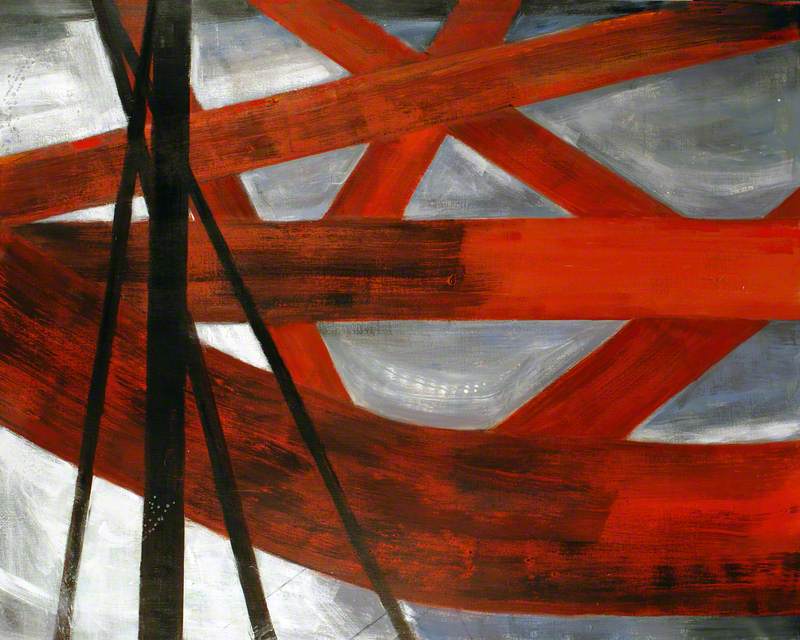 © Wilhelmina Barns-Graham Trust. Photo credit: Museums & Galleries Edinburgh – City of Edinburgh Council
© Wilhelmina Barns-Graham Trust. Photo credit: Museums & Galleries Edinburgh – City of Edinburgh Council
Explore artists in this Curation
View all 20-
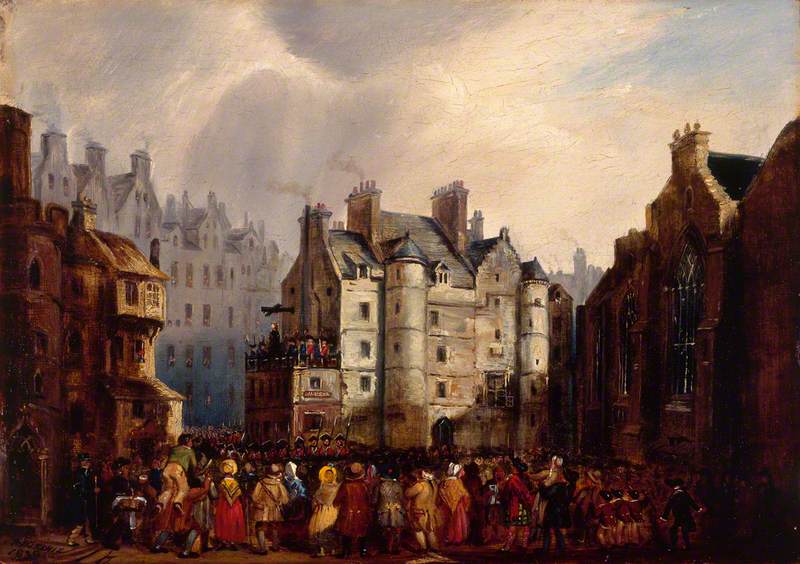 Alexander Hay Ritchie (1822–1895)
Alexander Hay Ritchie (1822–1895) -
 Alberto Morrocco (1917–1998)
Alberto Morrocco (1917–1998) -
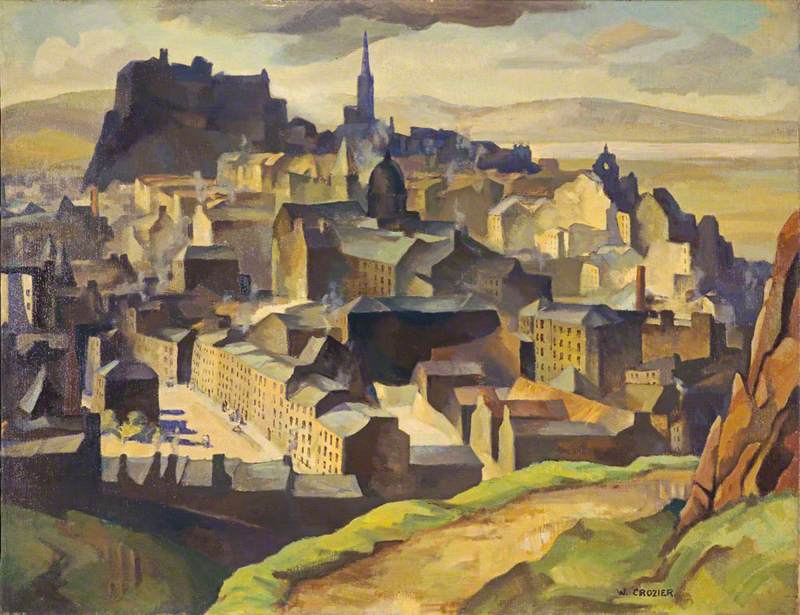 William Crozier (1893–1930)
William Crozier (1893–1930) -
 John Wilson Ewbank (c.1799–1847)
John Wilson Ewbank (c.1799–1847) -
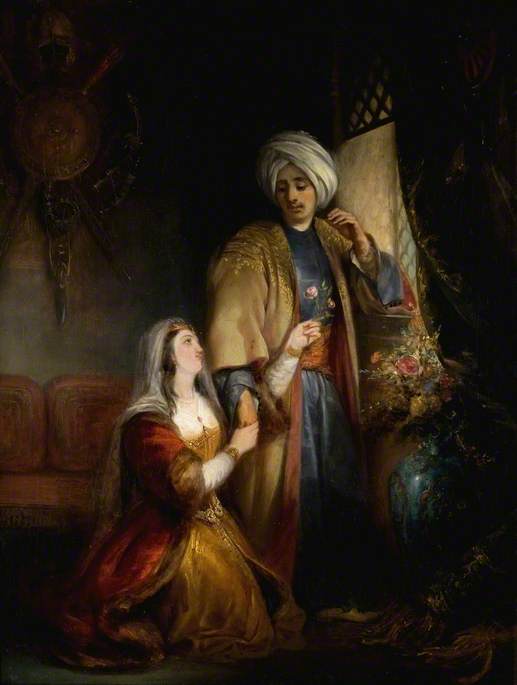 William Allan (1782–1850)
William Allan (1782–1850) -
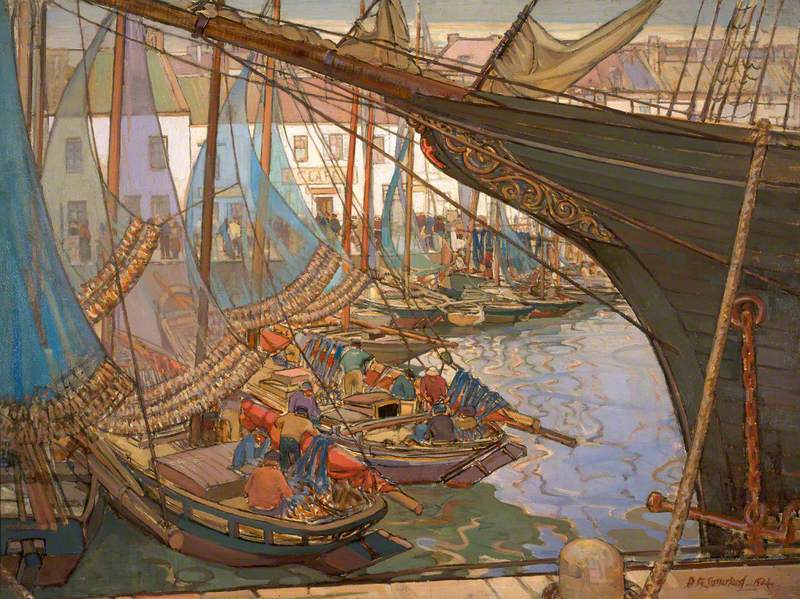 David Macbeth Sutherland (1883–1973)
David Macbeth Sutherland (1883–1973) -
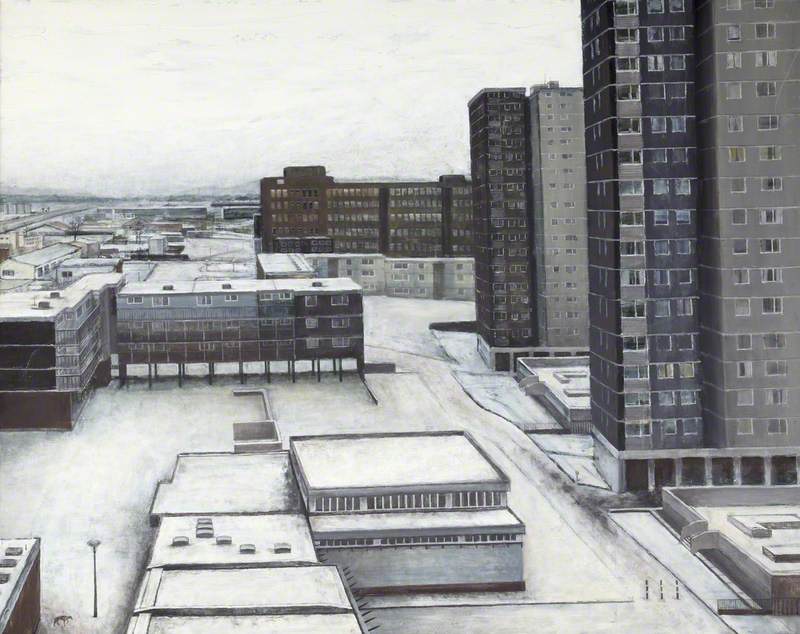 Donald Provan (b.1964)
Donald Provan (b.1964) -
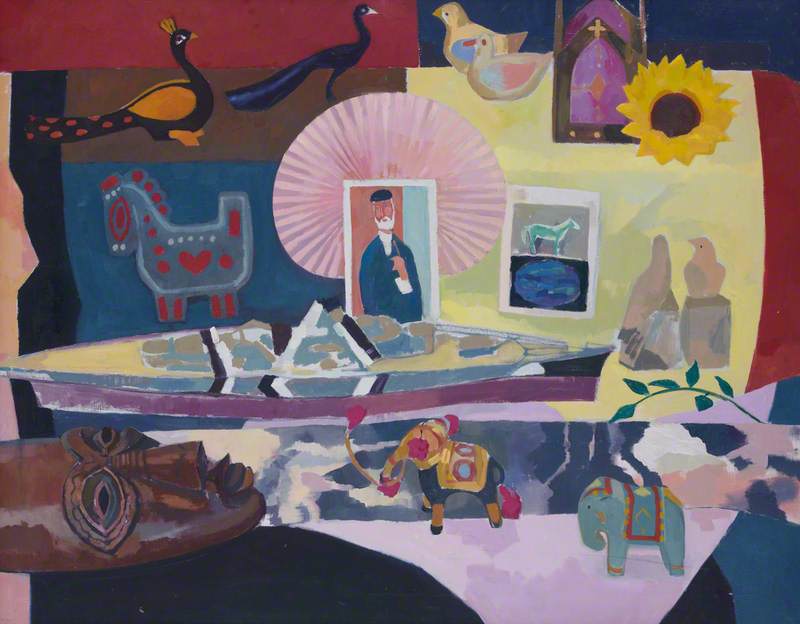 Maggie Milne (b.1957)
Maggie Milne (b.1957) -
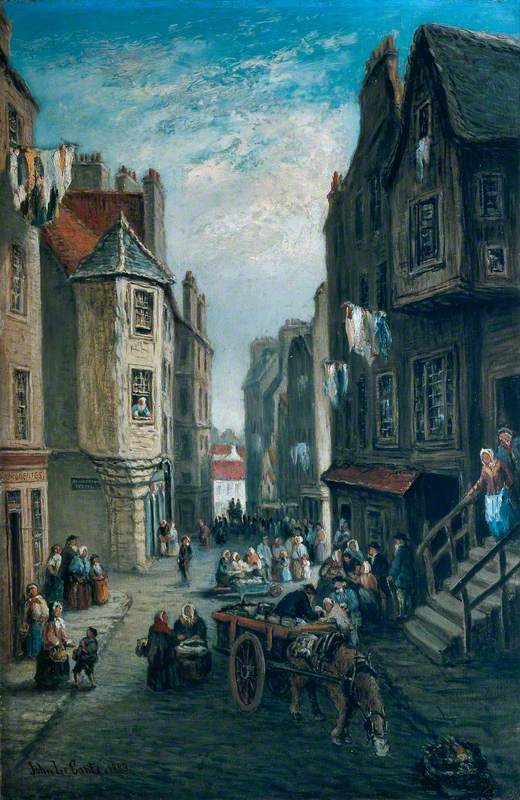 John Le Conte (1816–1887)
John Le Conte (1816–1887) -
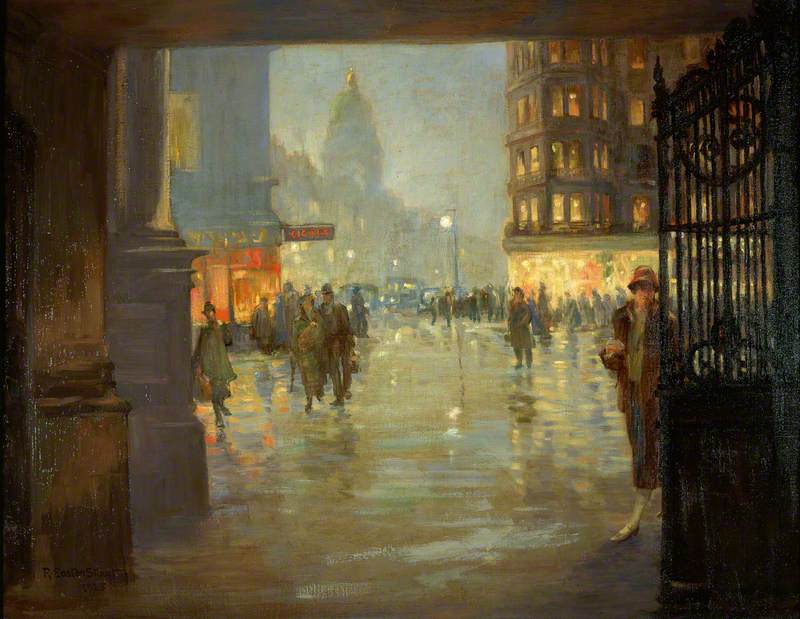 Robert Easton Stuart (1864–1940)
Robert Easton Stuart (1864–1940) - View all 20

